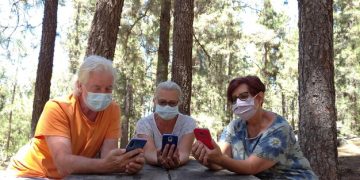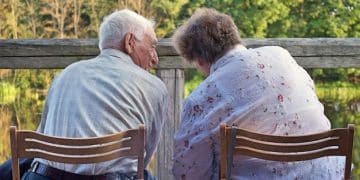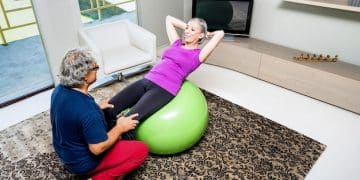New Guidelines: Managing Senior Diabetes with Diet & Exercise
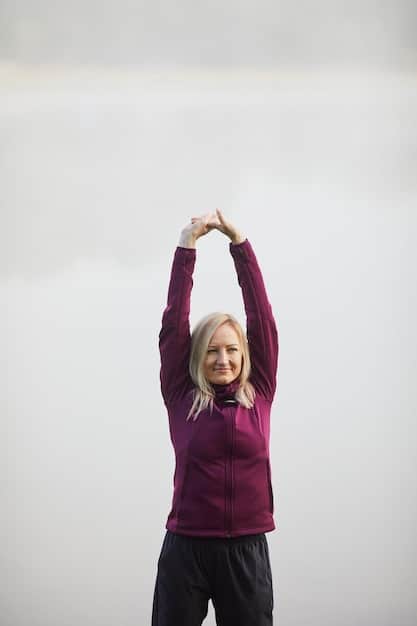
New guidelines for managing diabetes in seniors underscore a personalized approach, integrating tailored dietary plans and consistent physical activity to optimize glycemic control, enhance quality of life, and mitigate age-related health complications effectively.
Navigating diabetes management in later life brings forth unique challenges and opportunities. The landscape of healthcare is ever-evolving, and recent insights provide a refined roadmap for seniors. This article delves into the New Guidelines: Managing Diabetes in Seniors with Diet and Exercise, offering a comprehensive look at how these foundational pillars can significantly improve health outcomes and quality of life for our older population.
Understanding the Evolving Landscape of Senior Diabetes Care
The prevalence of type 2 diabetes significantly increases with age, making it a critical public health concern among seniors. Traditional diabetes management strategies, while effective for younger populations, often require adjustments to account for the unique physiological changes, comorbidities, and life circumstances of older adults. The latest guidelines emphasize a nuanced, patient-centered approach that prioritizes functional status, cognitive abilities, and overall well-being alongside glycemic control.
Older adults face a higher risk of hypoglycemia (low blood sugar) due to various factors, including impaired counter-regulatory responses, polypharmacy, and decreased renal function. Therefore, tightly controlled blood sugar targets, which might be appropriate for younger individuals, can be dangerous for seniors. Instead, a more relaxed yet still effective approach to glucose management is often recommended, focusing on preventing symptomatic hyperglycemia and avoiding severe hypoglycemia, which can lead to falls, hospitalizations, and cognitive decline.
Individualized Goals: Beyond HbA1c
For seniors, managing diabetes extends beyond achieving a specific HbA1c target. The focus shifts to a holistic view, considering factors such as:
-
Functional Status: Maintaining mobility and independence is paramount. Diabetes management should support, not hinder, daily activities.
-
Cognitive Function: Preventing extreme glucose fluctuations can help protect cognitive health, reducing the risk of dementia progression.
-
Comorbidities: Many seniors have multiple health conditions (e.g., heart disease, kidney disease, hypertension) that influence diabetes treatment choices. Strategies must consider potential drug interactions and additive burdens.
-
Quality of Life: Treatment plans should enhance, not detract from, an individual’s enjoyment of life, avoiding overly restrictive diets or exercise regimens that are impossible to sustain.
The new guidelines advocate for shared decision-making, where healthcare providers collaborate with seniors and their caregivers to set realistic and achievable goals that align with personal values and life expectations. This collaborative approach ensures that treatment plans are not only medically sound but also practical and person-centered.
Understanding these foundational shifts in philosophy is crucial before diving into the specifics of diet and exercise. The overarching message is clear: senior diabetes care is about living well, not just living longer, with an emphasis on preserving functionality and maintaining a good quality of life.
Dietary Strategies Tailored for Senior Diabetics
Nutrition plays a pivotal role in managing diabetes at any age, but for seniors, dietary recommendations often need to be more flexible and considerate of unique nutritional needs, chewing difficulties, changes in appetite, and potential nutrient deficiencies. The new guidelines move away from rigid, one-size-fits-all meal plans towards adaptable approaches that support overall health while managing blood glucose levels effectively.
Instead of strict calorie counting or carbohydrate restrictions, the emphasis is now on nutrient density and balanced macronutrient intake. Ensuring adequate protein, fiber, vitamins, and minerals is crucial for maintaining muscle mass, bone health, immune function, and digestive regularity—all of which can be compromised in older adults with diabetes.
Emphasizing Whole Foods and Nutrient Density
A diet rich in whole, unprocessed foods is the cornerstone of effective diabetes management for seniors. This includes a variety of:
-
Lean Proteins: Essential for preserving muscle mass, which naturally declines with age. Sources include chicken, fish, eggs, legumes, and lean dairy products.
-
High-Fiber Carbohydrates: Whole grains, fruits, and vegetables provide sustained energy release, help regulate blood sugar, and support digestive health. Fiber also contributes to satiety, aiding weight management if needed.
-
Healthy Fats: Avocados, nuts, seeds, and olive oil provide essential fatty acids and can improve satiety without significantly impacting blood sugar levels.
-
Hydration: Adequate fluid intake is often overlooked but critical, especially for seniors who may have a diminished sense of thirst. Water should be the primary beverage, avoiding sugary drinks.
These food groups collectively offer a spectrum of nutrients necessary for overall health, reducing the risk of complications associated with diabetes and aging. The focus is on quality rather than quantity, ensuring that every meal contributes meaningfully to a senior’s nutritional well-being.
Dietary plans should also consider the senior’s cultural preferences, budget, and access to fresh foods. Individualized meal planning with a registered dietitian nutritionist can address specific needs, such as managing concurrent kidney disease or dysphagia (difficulty swallowing). This personalized approach ensures that recommended dietary changes are sustainable and enjoyable, promoting long-term adherence rather than short-term compliance.
The Power of Physical Activity: Exercise Guidelines for Seniors
Regular physical activity is a potent medicine for seniors with diabetes, offering benefits far beyond glucose control. It improves cardiovascular health, strengthens muscles and bones, enhances balance and coordination (reducing fall risk), and significantly boosts mood and cognitive function. The new guidelines recommend a balanced approach incorporating various types of exercise, adapted to individual capabilities and health conditions.
Before initiating any exercise program, seniors should consult their healthcare provider to assess their current health status and identify any limitations. This precautionary step ensures that the chosen activities are safe and appropriate, minimizing the risk of injury or exacerbating existing conditions. The goal is to integrate exercise as a regular, enjoyable part of daily life, not just a chore tailored solely for diabetes management.
Types of Exercise and Recommendations
A comprehensive exercise program for seniors with diabetes typically includes a mix of:
-
Aerobic Exercise: Aim for at least 150 minutes of moderate-intensity aerobic activity each week (e.g., brisk walking, swimming, cycling). This improves insulin sensitivity and cardiovascular fitness. Sessions can be broken into shorter 10-15 minute bursts throughout the day.
-
Strength Training: Incorporate muscle-strengthening activities at least two days a week, working all major muscle groups. Examples include lifting light weights, using resistance bands, or bodyweight exercises like chair stands. Strength training helps preserve muscle mass, which is vital for metabolism and mobility.
-
Balance and Flexibility Exercises: Activities like Tai Chi, yoga, or simple stretching routines can enhance balance, reduce the risk of falls, and improve joint flexibility. These are crucial for maintaining independence and quality of life.
The emphasis is on consistency and progression. Starting slowly and gradually increasing the duration, intensity, or frequency is key to building stamina and preventing injury. For seniors with mobility issues, chair exercises or water aerobics can be excellent alternatives, providing resistance and support without excessive strain on joints.

Encouraging social physical activities, such as group fitness classes or walking clubs, can enhance adherence by providing motivation and combating loneliness. The psychological benefits of exercise—reduced stress, improved sleep, and enhanced self-esteem—are equally important for overall well-being in seniors with diabetes, creating a positive feedback loop that reinforces healthy habits.
Monitoring and Personalization: Key to Success
Effective diabetes management in seniors hinges on diligent monitoring and a highly personalized approach to treatment. The new guidelines underscore the importance of regular blood glucose checks, not just for immediate management but for gathering data that informs long-term strategies. This data, combined with a thorough understanding of the individual’s lifestyle and health status, allows healthcare providers to fine-tune diet and exercise recommendations for optimal outcomes.
Monitoring can involve traditional finger-prick blood glucose meters, or for some, continuous glucose monitoring (CGM) systems that provide real-time data and trends. The choice of monitoring method should be decided collaboratively, considering the senior’s comfort, cognitive ability to interpret results, and access to technology. The goal is to find a balance between obtaining necessary data and avoiding undue burden or anxiety for the patient.
Tailoring Interventions Based on Data and Lifestyle
Personalization is not a static process; it requires ongoing assessment and adjustment. Key aspects include:
-
Dietary Adjustments: Based on blood glucose responses to specific foods, meal timing, and the senior’s general appetite and energy levels. For instance, if post-meal readings are consistently high, adjustments to carbohydrate portion sizes or meal composition might be necessary.
-
Exercise Modification: Adapting the type, intensity, and duration of physical activity based on how the senior feels, their endurance, and any changes in physical limitations or comorbidities. If walking becomes difficult, exploring swimming or seated exercises might be more appropriate.
-
Medication Synchronization: Ensuring that diabetes medications, if prescribed, are synchronized with meal times and exercise schedules to prevent hypoglycemia. This requires close communication between the senior, caregivers, and the healthcare team.
The concept of “time in range” (TIR), which refers to the percentage of time blood glucose levels remain within a target range, is gaining prominence. For seniors, a less stringent TIR might be acceptable, focusing on avoiding extremes of high and low blood sugar rather than strict adherence to a narrow range. This pragmatic approach acknowledges the unique vulnerabilities of older adults.
Furthermore, regular check-ins with an interdisciplinary healthcare team—including a primary care physician, endocrinologist, registered dietitian, and physical therapist—are paramount. Each specialist brings unique expertise that contributes to a holistic treatment plan, ensuring all facets of the senior’s health are considered. This team approach fosters a comprehensive and adaptable management strategy that evolves with the senior’s changing needs, ensuring sustained success in managing their diabetes.
Addressing Challenges and Overcoming Barriers
While the new guidelines for managing diabetes in seniors with diet and exercise offer a clear path forward, implementing these strategies is not without its challenges. Older adults often face unique barriers that can impede adherence to seemingly straightforward recommendations. Recognizing and proactively addressing these obstacles is crucial for successful long-term management and improved health outcomes.
One significant barrier is polypharmacy, the use of multiple medications. Seniors with diabetes often take drugs for various comorbidities, which can lead to complex medication regimens, increased risk of side effects, and potential drug-nutrient interactions. Educating seniors and their caregivers about the importance of medication adherence, simplifying schedules when possible, and regularly reviewing medication lists with a pharmacist are vital steps.
Common Obstacles and Mitigation Strategies
Several common challenges can affect adherence to dietary and exercise plans:
-
Physical Limitations: Arthritis, pain, limited mobility, or fear of falling can discourage physical activity. Modified exercises, assistive devices (e.g., walkers, handrails), and guidance from a physical therapist can help.
-
Cognitive Impairment: Memory issues or cognitive decline can make it difficult to remember meal plans, exercise routines, or medication schedules. Simplifying instructions, using visual aids, frequent reminders, and involving caregivers are effective strategies.
-
Financial Constraints: Healthy foods can be expensive, and access to fresh produce may be limited. Referrals to community resources, food banks, or programs that offer discounted healthy foods can alleviate this burden.
-
Social Isolation and Depression: Loneliness and depression are common in older adults and can negatively impact motivation for self-care. Encouraging participation in social activities, support groups, or community exercise programs can provide emotional support and motivation.
-
Lack of Education/Understanding: Seniors or their caregivers may not fully grasp the importance of diet and exercise in diabetes management. Clear, concise, and repeated education from healthcare providers is essential.
Overcoming these barriers requires a multifaceted approach that extends beyond clinical recommendations. It involves empathetic communication, practical problem-solving, and leveraging community and family support networks. For example, suggesting home-based exercise videos or virtual cooking classes can be helpful when outdoor activities or in-person classes are not feasible. The focus should always be on finding adaptive solutions that fit the individual’s circumstances rather than imposing a rigid ideal.
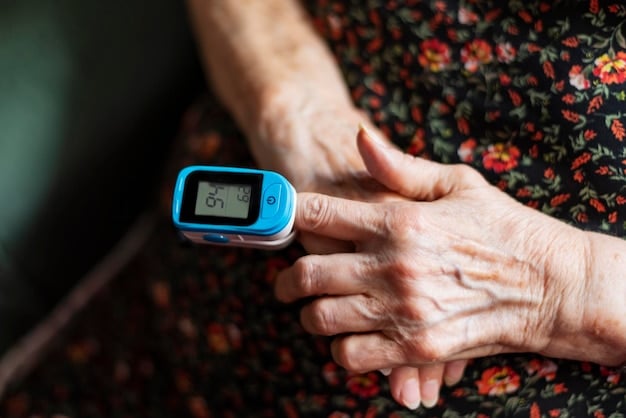
Ultimately, the success of the new guidelines hinges on a collaborative effort among seniors, their families, caregivers, and a dedicated healthcare team. By acknowledging and addressing the unique challenges faced by older adults, we can create an environment where effective diabetes management through diet and exercise is not just a prescription, but an achievable and sustainable path to a healthier, more fulfilling life.
The Role of Caregivers and Support Systems
The journey of managing diabetes in seniors is often a collaborative one, where the role of caregivers and robust support systems becomes indispensable. Family members, friends, and professional caregivers frequently play a crucial part in assisting with dietary adherence, facilitating exercise, monitoring blood glucose, and ensuring medication compliance. The new guidelines implicitly recognize this partnership, encouraging healthcare providers to engage with caregivers as an integral part of the patient’s care team.
Caregivers can offer practical support, such as meal preparation according to dietary guidelines, accompanying seniors on walks or to exercise classes, and helping to schedule and remember appointments. Beyond practical assistance, their emotional support can significantly impact a senior’s motivation and psychological well-being, fostering a positive attitude towards managing their condition.
Empowering Caregivers Through Education and Resources
To be effective, caregivers need adequate education and resources. Healthcare providers should equip them with:
-
Comprehensive Information: Clear explanations of the senior’s diabetes type, treatment goals, potential complications, and signs of hypoglycemia or hyperglycemia.
-
Practical Skills: Training on how to read food labels, prepare healthy meals, safely assist with exercise, and use blood glucose monitoring devices.
-
Coping Strategies: Resources for managing caregiver stress and burn out, recognizing that caregiving can be demanding both physically and emotionally.
-
Access to Support Networks: Information about local support groups for caregivers or online communities where they can share experiences and advice.
The importance of open communication within the care team—including the senior, caregivers, and healthcare professionals—cannot be overstated. Regular discussions ensure that everyone is aligned on treatment goals, understands their roles, and can collectively problem-solve any emerging issues. This collaborative environment promotes a sense of shared responsibility and provides a safety net for the senior, enhancing their overall care.
Support systems extend beyond immediate family to include community programs, senior centers, and online platforms dedicated to diabetes education and healthy aging. These resources can offer additional educational opportunities, structured exercise classes, and social interaction, all of which contribute to a more holistic approach to diabetes management. Fostering a supportive environment, both at home and within the community, is fundamental to helping seniors with diabetes thrive and maintain their independence.
Integrating Lifestyle Changes into Daily Life: Sustainable Approaches
The success of the new guidelines for managing diabetes in seniors with diet and exercise ultimately hinges on the ability to integrate these vital practices seamlessly into daily life. For lifestyle changes to be effective and sustainable, they must be practical, enjoyable, and adaptable to individual preferences and evolving circumstances. This often means moving away from a prescriptive mindset towards a more flexible and holistic approach.
One key aspect is fostering intrinsic motivation. Instead of emphasizing restrictions, focus on the benefits of healthy choices—increased energy, better mood, improved mobility, and greater independence. Encourage seniors to identify activities and foods they genuinely enjoy, then work with them to adapt these preferences within a healthy framework. For example, if a senior enjoys cooking, explore new healthy recipes together. If they love gardening, emphasize its physical activity benefits.
Strategies for Long-Term Adherence
-
Small, Gradual Changes: Overhauling an entire lifestyle at once can be overwhelming. Encourage small, manageable changes that can be consistently maintained. For example, instead of immediately aiming for a 30-minute walk, suggest starting with two 10-minute walks.
-
Routine Integration: Incorporate healthy habits into existing routines. If a senior always watches television in the evening, suggest doing light stretches or walking in place during commercials. If breakfast is a fixed meal, ensure it’s a balanced, high-fiber choice.
-
Goal Setting: Encourage realistic, short-term goals that are measurable and achievable. Celebrate small victories to build confidence and reinforce positive behaviors. This could be sticking to a healthy meal plan for a week or increasing daily steps by a small increment.
-
Problem-Solving Skills: Equip seniors and caregivers with strategies to overcome setbacks. Life happens; a missed exercise session or an indulgence shouldn’t derail the entire effort. Encourage resuming healthy habits immediately rather than giving up.
-
Technology Utilization: For tech-savvy seniors, fitness trackers, health apps, and online communities can provide motivation, track progress, and facilitate connections with peers facing similar challenges. These tools can make self-management more engaging.
-
Regular Reassessment: As seniors age, their needs and abilities change. Periodically reassessing dietary preferences, physical capabilities, and overall health status ensures that the lifestyle plan remains relevant and effective. This flexibility is crucial for long-term adherence.
Ultimately, the goal is to empower seniors to become active participants in their own care, fostering a sense of control and self-efficacy. By making healthy eating and regular exercise an enjoyable and integrated part of their daily lives, rather than a burden, we can significantly improve their overall health, well-being, and longevity, aligning perfectly with the intent of the new guidelines for diabetes management in older adults.
| Key Point | Brief Description |
|---|---|
| 🍎 Personalized Diet | Focuses on whole, nutrient-dense foods; adapted to individual needs and preferences for better adherence. |
| 🏃♀️ Adaptable Exercise | Combines aerobic, strength, and balance training, customized for physical abilities and safety. |
| 📊 Holistic Monitoring | Emphasizes patient-centered glucose targets and continuous assessment for optimal health outcomes. |
| 🤝 Caregiver Support | Inclusion of family and caregivers in the management plan, fostering education and practical assistance. |
Frequently Asked Questions
▼
The new guidelines prioritize individualized goals over strict HbA1c targets, focusing on functional status, quality of life, and avoiding hypoglycemia. They advocate for personalized dietary plans emphasizing whole foods and adaptable exercise regimens that consider comorbidities and physical limitations. This shift promotes a more holistic and patient-centered approach to care.
▼
Seniors have unique nutritional needs, often facing challenges like altered appetite, dental issues, or nutrient deficiencies. Personalized diet plans ensure they receive adequate macronutrients and micronutrients while managing blood sugar, preserving muscle mass, and accommodating preferences or concurrent health conditions, making adherence more sustainable and effective for their overall well-being.
▼
A balanced program typically includes moderate-intensity aerobic activities (e.g., brisk walking, swimming) for cardiovascular health and insulin sensitivity. Additionally, strength training (e.g., light weights, resistance bands) helps maintain muscle mass, while balance and flexibility exercises (e.g., Tai Chi, yoga) reduce fall risk and improve mobility. All activities should be adapted to individual capabilities.
▼
Caregivers can offer practical support like meal preparation, assisting with exercise, and monitoring blood glucose. They should be educated on the senior’s plan and signs of complications. Emotional support and encouraging participation in social activities are also vital. Open communication with the healthcare team ensures a coordinated and effective approach to care.
▼
Adapting management strategies prioritizes preventing harmful hypoglycemia, preserving cognitive function and physical independence, and improving overall quality of life. This tailored approach acknowledges unique age-related vulnerabilities and comorbidities, leading to better adherence, fewer adverse events, and a more sustainable path to managing diabetes effectively in later years.
Conclusion
The new guidelines for managing diabetes in seniors represent a significant evolution in care, moving towards a more compassionate, individualized, and holistic approach. By prioritizing tailored dietary interventions and adaptable exercise regimens, these guidelines aim to not only control blood glucose but also enhance functional status, improve cognitive well-being, and ultimately uplift the quality of life for older adults. The emphasis on personalized goals, robust monitoring, addressing common barriers, and leveraging comprehensive support systems ensures that seniors with diabetes can lead fulfilling and healthy lives. The journey requires a collaborative effort among seniors, their families, and healthcare providers, fostering an environment where optimal health outcomes are not just a medical target but a lived reality.
